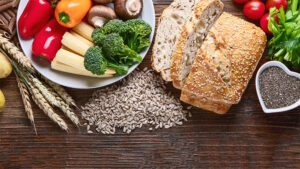The Importance of Dietary Fiber in Nutrition
Carbohydrates, one of the basic groups of nutrients in nutrition, also include dietary fiber. Dietary fiber refers to polysaccharides which include cellulose, hemicellulose, lignin, inulin, oligosaccharides, pectins and others. These compounds are edible parts of grains, fruits, vegetables, seeds and legumes. Although we cannot digest and absorb them, they play an important role in digestion and digestive system health. Dietary fiber is commonly divided into water-insoluble and water-soluble types, and depending on the type of food, their presence varies.
Insoluble Fiber
Dietary fiber that does not dissolve in water passes through the digestive tract, stimulates intestinal peristalsis and makes stool softer, so this group of fiber is considered digestive regulators. Bran, whole grains, seeds, legume husks and fruit and vegetable peels are their best sources. The most well-known water-insoluble fibers are cellulose, hemicellulose and lignin. It has been shown that these dietary fibers also affect the absorption and regulation of fats, cholesterol and triglycerides as well as blood glucose, thereby contributing to the balance of the overall state of the organism.

Soluble Fiber
Water-soluble dietary fiber includes pectin, beta glucans and fructo and glucooligosaccharides which create a gel-like gelatinous substance in the digestive tract. These carbohydrates are an integral part of fruits, vegetables, whole grains, legumes and seeds. Water-soluble dietary fiber is often called prebiotics, meaning they serve as food for gut microbiota, improving the growth of good bacteria and their positive effects on overall health. Through fermentation in the digestive system, gut microbiota creates a series of effective compounds such as short-chain fatty acids, mucins and vitamin K, which mostly have proven positive effects on the immune, digestive and cardiovascular systems.
Dietary Sources of Fiber
Optimal daily fiber intake will be achieved if the diet is based on whole grains, vegetables, fruits, legumes, nuts, seeds and food products that contain these very foods. Bread, as one of the foods consumed almost daily, can be an excellent source of dietary fiber by including whole flour and seeds in its basic recipe. Therefore, it’s always better to choose whole grain bread that contains seeds and whole grains, and the only thing better than that is to prepare such bread at home yourself.

